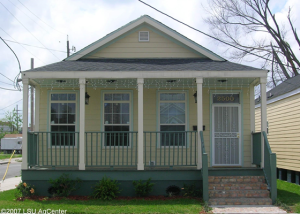Factory-Built Housing
The growing demand for affordable housing has increased the need for a wider variety of housing options. Factory-built housing is a viable solution to this need and provides a cost effective option for communities. Despite this, barriers to its use persist including regulatory and financing issues. This guide addresses these barriers and discusses ways to overcome them.
A Community Guide to Factory-built housing is an easy to understand resource for local government officials, builders, and the public to learn more about manufactured homes, modular housing, and prefabricated construction in general. It is designed to assist in the interpretation and application of state building codes and local land-use planning regulations to factory-built homes.

This guide is divided into two sections: Manufactured Homes and Modular Housing. Manufactured Homes, commonly referred to as HUD code housing, are built in a factory setting according to the Housing Construction and Safety Standards established by the U.S. Department of Housing and Urban Development (HUD) in 1976. These construction standards supersede local codes.
A Community Guide to Factory-Built Housing
Modular homes, on the other hand, are constructed off-site in components or modules that are transported to the homeowner’s site for assembly, much like building blocks. These homes are regulated by the HUD code, but they are also subject to local building standards.
Manufactured homes represent the largest single source of unsubsidized affordable housing in the United States. This type of housing is often used by young families, first time homebuyers, older adults and people on fixed incomes. In 1999, one-third of all new single-family homes were manufactured. However, there are significant demand, regulatory and financing barriers to the wider use of this type of housing. This guide outlines how to overcome these barriers and encourages communities to consider the benefits of increasing the availability of this affordable housing.
Many of us are aware that manufactured homes are financed differently than traditional site-built houses. While it is true that financing options were limited a few years ago, this is no longer the case. A number of financial institutions now offer competitive mortgage rates and flexible credit requirements for borrowers. This allows qualified buyers to purchase a manufactured or modular home that would not be feasible in the traditional market.
The advantage of constructing a home in a controlled factory environment is that it is protected from inclement weather conditions, which can delay the construction process and cause damage to materials. In addition, the precision construction methods and inventory controls of a factory setting allow for a greater degree of material efficiency which helps to keep prices lower than site-built homes.
These advantages are why more and more people are choosing to buy a manufactured or modular home. However, there are still misconceptions about this type of housing and barriers to its wider use. This guide aims to dispel these myths and help municipalities, builder associations, homebuilders, and lenders better understand this type of housing and its benefits.